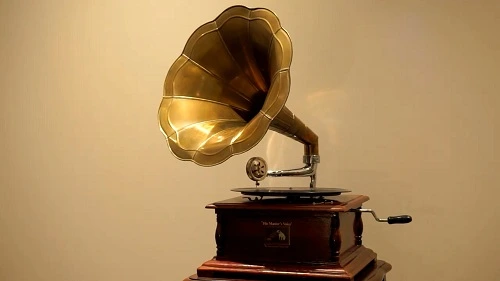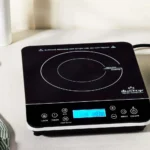
In the realm of music and sound recording, few inventions have had as profound an impact as the phonograph. Introduced in the late 19th century, this groundbreaking device revolutionized the way we capture and experience audio, paving the way for the vibrant music industry we know today. From its humble beginnings as a simple machine that recorded sound onto tin foil cylinders to its evolution into the iconic gramophone and beyond, the phonograph’s journey is filled with fascinating milestones and innovations. In this blog post, we’ll explore 25 interesting facts about the phonograph that highlight its historical significance, technological advancements, and enduring legacy in the world of music. Whether you’re a music enthusiast, a history buff, or simply curious about the origins of recorded sound, these insights will deepen your appreciation for this remarkable invention.
1857: Édouard-Léon Scott de Martinville invented the Phonautograph. This device is recognized as the earliest known instrument capable of recording sound waves, although it lacked the ability to reproduce sound. The Phonautograph used a diaphragm that would vibrate in response to sound waves, creating a visual representation of the sound on a soot-coated surface. This groundbreaking invention laid the groundwork for future sound recording technologies, demonstrating the potential for capturing auditory experiences in a tangible format, even if playback was not yet possible.
10 seconds: The earliest identifiable recording of a human voice. Captured by de Martinville in 1860, this recording features the phrase “Au Clair de la Lune.” It is significant not only for its age but also for its clarity, marking a pivotal moment in the history of audio recording. The recording, which lasts approximately 10 seconds, provides a glimpse into the past and showcases the capabilities of the Phonautograph, despite its inability to play back the sound. This achievement would inspire future inventors to develop technologies that could both record and reproduce sound.
1877: Thomas Edison invented the first phonograph. Edison’s phonograph was revolutionary, as it was the first device capable of both recording and reproducing sound. Demonstrated in late 1877, the phonograph utilized a cylinder wrapped in tinfoil, which would capture sound vibrations through a needle that etched grooves into the foil. This invention not only transformed the music industry but also had profound implications for communication and entertainment, allowing people to listen to recorded sound for the first time. Edison’s phonograph marked the beginning of a new era in audio technology.
February 19, 1878: U.S. Patent No. 200,521 was granted to Edison. This patent recognized Edison’s invention of the phonograph, solidifying his place in history as a key figure in sound recording technology. The patent process underscored the importance of intellectual property in fostering innovation. Edison’s phonograph would undergo numerous improvements over the years, leading to a variety of applications in music, education, and communication. The granting of this patent was a crucial step in the commercialization of sound recording technology.
1,093: The total number of U.S. patents awarded to Edison. Throughout his lifetime, Edison was awarded an impressive 1,093 patents, many of which were related to the phonograph and its enhancements. This prolific output reflects Edison’s relentless pursuit of innovation and improvement in technology. His contributions to the phonograph included advancements in sound quality, playback mechanisms, and recording materials, which helped to establish the phonograph as a staple in homes and businesses. Edison’s inventive spirit helped shape the landscape of modern audio technology.
1887: Emile Berliner patented the Gramophone. Berliner’s Gramophone represented a significant evolution from Edison’s phonograph, as it utilized flat discs instead of cylindrical records. The lateral-cut grooves on these discs became the direct ancestor of modern records, allowing for easier mass production and playback. This innovation not only improved sound fidelity but also made it more convenient for consumers to enjoy music. The Gramophone’s design set the stage for the record industry and the eventual transition to vinyl records, which became the standard format for music distribution.
~120-160 RPM: The range of rotational speeds for Edison’s wax cylinders. Edison’s wax cylinders operated at a rotational speed that typically ranged from 120 to 160 revolutions per minute (RPM). This speed was crucial for achieving the desired sound quality and playback duration. The choice of RPM affected the fidelity and clarity of the audio, influencing how listeners experienced recorded sound. As technology advanced, the standardization of speeds would evolve, but Edison’s initial choices played a foundational role in the development of sound recording.
2 minutes: The typical maximum playing time for standard wax cylinders. Around 1902, the standard wax cylinders, which had a thread density of 100 TPI (threads per inch), typically allowed for a maximum playing time of about 2 minutes. This limitation was largely due to the physical constraints of the cylinder’s design and the recording medium used. While this duration may seem short by today’s standards, it was groundbreaking at the time, enabling people to enjoy short musical pieces or spoken word recordings in their homes.
4 minutes: The extended playing time of Edison’s Amberol cylinders. Introduced in 1908, Edison’s Amberol cylinders featured a higher thread density of 200 TPI, which allowed for an extended playing time of up to 4 minutes. This advancement was significant because it enabled longer recordings, accommodating more complex musical compositions and extended performances. The Amberol cylinders represented a notable improvement in the phonograph’s capabilities, catering to the growing demand for more content and enhancing the listening experience for consumers. This innovation also reflected the evolving tastes and expectations of audiences, as longer recordings became increasingly desirable.
78.26 RPM: The speed standardized around 1925 for shellac disc records. By 1925, the speed of 78.26 RPM became the industry standard for shellac disc records, commonly referred to as “78s.” This speed allowed for a balance between sound quality and playtime, making it suitable for the popular music of the era. The 78 RPM discs were made from a brittle material called shellac, which limited their durability but provided a relatively high sound fidelity for the time. The standardization of this speed facilitated the mass production of records and contributed to the growth of the music industry, as consumers could easily find and enjoy recorded music.
10 inches: The most common diameter for popular music 78 RPM shellac records. The 10-inch diameter became the standard size for popular music 78 RPM shellac records, making it a familiar format for consumers. This size was practical for both manufacturing and playback, allowing for a reasonable playing time of approximately 3 minutes per side. The popularity of 10-inch records helped to establish a market for recorded music, as they were widely distributed and played on phonographs in homes and public venues. This format played a critical role in the dissemination of music and the rise of the recording industry.
12 inches: A standard diameter for 78 RPM shellac records. While 10-inch records dominated popular music, 12-inch shellac records were often used for classical music or longer selections. The larger diameter allowed for a greater amount of material to be recorded, resulting in an average playing time of about 5 minutes per side. This format catered to the needs of classical music enthusiasts who desired longer performances without interruptions. The 12-inch records also showcased the capabilities of phonograph technology, as they provided an opportunity for richer sound quality and more complex musical arrangements.
~3 minutes: The average playing time per side for a typical 10-inch 78 RPM record. A typical 10-inch 78 RPM record had an average playing time of around 3 minutes per side. This duration was largely influenced by the physical limitations of the shellac material and the recording technology of the time. Although this may seem brief by modern standards, it was sufficient for many popular songs and performances of the era. The limited playing time also encouraged the production of various singles, allowing record labels to promote multiple artists and styles within the constraints of the format.
~5 minutes: The average playing time per side for a typical 12-inch 78 RPM record. The average playing time per side for a 12-inch 78 RPM record was approximately 5 minutes, making it ideal for longer musical compositions and classical pieces. This additional time allowed for more elaborate arrangements and greater expression in performance, catering to the preferences of audiences who appreciated extended listening experiences. The 12-inch format became a staple in the classical music repertoire, providing listeners with a richer and more immersive auditory experience.
~90-100: The typical number of grooves per inch (TPI) on a standard 78 RPM shellac record. Standard 78 RPM shellac records typically featured around 90 to 100 grooves per inch (TPI). This density of grooves was essential for capturing the nuances of sound and providing a satisfactory listening experience. The design of these grooves allowed for the stylus to track the variations in the sound wave, translating them into audible music. The groove density was a critical factor in the fidelity of the recording, influencing the overall quality of playback and the listener’s enjoyment.
1948: Columbia Records introduced the 33 1/3 RPM 12-inch Long Play (LP) vinyl record. In 1948, Columbia Records revolutionized the music industry by introducing the 33 1/3 RPM 12-inch Long Play (LP) vinyl record. This new format allowed for significantly longer playing times, typically around 22 minutes per side, which was a drastic improvement over the previous 78 RPM records. The LP’s microgroove technology enabled a greater number of grooves per inch, resulting in improved sound fidelity and a richer listening experience. The introduction of the LP marked a turning point in music consumption, as it allowed artists to present entire albums rather than just singles, fundamentally changing the way music was produced and enjoyed.
33 1/3 RPM: The standard rotational speed for LP records. The standard rotational speed of 33 1/3 RPM for LP records was a key factor in their success. This speed allowed for longer playback times and enhanced sound quality, making it suitable for full-length albums and complex musical compositions. The LP format quickly gained popularity among consumers and artists alike, as it provided a more comprehensive listening experience. The 33 1/3 RPM standard became the foundation for the modern music industry, influencing the way records were produced, marketed, and consumed.
~22 minutes: The typical maximum playing time per side for a standard 12-inch LP record. The typical maximum playing time of around 22 minutes per side for a standard 12-inch LP record was a game-changer for the music industry. This extended duration allowed artists to create and release entire albums, providing a platform for more cohesive artistic expression and storytelling through music. The ability to include multiple tracks on a single record transformed the listening experience, allowing fans to enjoy a complete collection of songs without needing to frequently change records. This shift not only influenced the music industry but also changed how music was marketed, leading to the rise of the concept of the “album” as a significant artistic format.
200-300+: The approximate range of grooves per inch (TPI) on a vinyl LP microgroove record. Vinyl LP microgroove records typically featured an impressive range of 200 to 300 grooves per inch (TPI), which significantly enhanced sound fidelity compared to earlier formats. This high density of grooves allowed for more detailed sound reproduction, capturing the subtleties of musical performances and providing a richer listening experience. The microgroove technology utilized in LPs enabled a more efficient use of space on the record, allowing for longer playing times without sacrificing audio quality. This innovation contributed to the widespread adoption of vinyl as the preferred medium for music distribution throughout the mid-20th century.
1949: RCA Victor introduced the 45 RPM 7-inch vinyl record. In 1949, RCA Victor introduced the 45 RPM 7-inch vinyl record, which quickly became a popular format for single songs. Designed primarily for the release of individual tracks, the 45 RPM record provided a convenient option for consumers who wanted to purchase and enjoy specific songs without committing to an entire album. The 7-inch format allowed for a maximum playing time of approximately 5-8 minutes per side, making it ideal for hit singles. The introduction of the 45 RPM record played a crucial role in shaping the music industry, as it facilitated the promotion of new artists and songs, leading to the rise of the Billboard charts and the concept of the “hit single.”
7 inches: The standard diameter for a 45 RPM single record. The 7-inch diameter became the standard for 45 RPM single records, providing a compact and easily manageable format for music lovers. This size was particularly appealing to consumers, as it was lightweight and could be easily stored and transported. The 45 RPM format allowed record labels to release singles at a lower cost, making it accessible for a wider audience. The popularity of the 7-inch record contributed to the growth of the music industry, as it encouraged the release of more singles and fostered a culture of music discovery among listeners.
~5-8 minutes: The typical maximum playing time per side for a 7-inch 45 RPM Extended Play (EP) record. For a 7-inch 45 RPM Extended Play (EP) record, the typical maximum playing time per side was around 5-8 minutes. This format struck a balance between the brevity of a single and the length of a full album, allowing artists to present a selection of songs that showcased their musical range. EPs became a popular choice for emerging artists and established musicians alike, offering a platform for experimentation and artistic expression without the commitment of a full album. The flexibility of the EP format also appealed to listeners, as it provided a diverse listening experience with multiple tracks in a single purchase.
16 2/3 RPM: An ultra-slow speed introduced in the 1950s. The 16 2/3 RPM speed was introduced in the 1950s primarily for spoken word recordings, such as “talking books” designed for the visually impaired. This ultra-slow speed allowed for extended playback times of up to 45 minutes per side on a 12-inch disc, making it practical for longer narratives and educational content. The introduction of this format expanded the use of vinyl records beyond music, demonstrating the versatility of the medium in delivering various types of audio content. The 16 2/3 RPM records played a significant role in making literature and information more accessible to a broader audience.
1957-1958: The Introduction of Stereophonic Vinyl LP Records
During the years 1957 and 1958, the music industry witnessed a significant technological advancement with the introduction of the first commercial stereophonic (stereo) vinyl LP records. This innovation required compatible cartridges and playback systems, which allowed for a more immersive listening experience by utilizing two separate audio channels. The stereo format enabled sound to be distributed between the left and right speakers, creating a sense of depth and space that was previously unattainable with monaural recordings. As a result, artists and producers began to explore new creative possibilities in music production, leading to a richer and more dynamic sound. The stereo LP quickly gained popularity among consumers, transforming the way music was enjoyed and solidifying the phonograph’s role as a central piece of home entertainment.
~1907: Enrico Caruso’s “Vesti la giubba” and Commercial Success
Around 1907, Enrico Caruso’s recording of “Vesti la giubba,” a famous aria from the opera Pagliacci, became a milestone in the history of recorded music. Often cited as the first record to surpass 1 million copies sold, this achievement underscored the phonograph’s commercial power and its capacity to reach a wide audience. Caruso, an Italian tenor, was one of the first classical musicians to achieve immense popularity through the medium of recorded sound. His powerful voice and emotive performances captivated listeners, and “Vesti la giubba” resonated with audiences, leading to its commercial success. This moment marked a turning point in the music industry, as it demonstrated the potential for recorded music to become a lucrative business, paving the way for future artists and the development of the recording industry as we know it today.
Frequently Asked Questions about Phonograph:
- What is a phonograph? The phonograph is a device invented by Thomas Edison in 1877 that records and reproduces sound. It initially used a cylinder to capture sound waves, which were then played back by a stylus tracing the grooves. Over time, the phonograph evolved into the gramophone, which used flat discs for recording.
- How does a phonograph work? A phonograph works by converting sound waves into mechanical vibrations. When sound is produced, it causes a diaphragm to vibrate, which is connected to a needle (stylus). This needle etches the sound waves onto a recording medium, such as a cylinder or disc. To play back the sound, the stylus runs along the grooves, reproducing the original vibrations and creating audible sound through a speaker.
- Who invented the phonograph? The phonograph was invented by Thomas Edison in 1877. His invention marked the first time humans could record and play back sound, a groundbreaking achievement that laid the foundation for the modern music industry.
- What were the first materials used for phonograph recordings? The first phonographs used tin foil as the recording medium. Edison’s original recordings were made on tin foil cylinders, which had sound waves etched into their surface. Later, wax cylinders and flat discs made of shellac became more common due to their improved sound quality and durability.
- What is the difference between a phonograph and a gramophone? The phonograph originally used cylindrical recordings, while the gramophone transitioned to flat discs. The gramophone, developed in the late 19th century, became more popular due to its ease of use and better sound quality. Essentially, the term “phonograph” is often used to refer to the early recording devices, whereas “gramophone” refers to the later disc-playing machines.
- When did the phonograph become popular? The phonograph gained popularity in the late 1890s and early 1900s, particularly with the introduction of the gramophone and the development of commercial record labels. By the 1920s, it had become a staple of home entertainment.
- What types of music were recorded on phonographs? Phonographs recorded a wide variety of music genres, including classical, jazz, blues, and popular music of the time. Early recordings often featured live performances, operatic arias, and folk songs, reflecting the musical tastes of the era.
- How did the phonograph influence the music industry? The phonograph revolutionized the music industry by allowing for the mass production and distribution of music. It enabled artists to reach broader audiences, created new revenue streams through record sales, and ultimately led to the development of the modern music industry, including record labels and radio.
- What are some famous phonograph recordings? Some of the most notable early phonograph recordings include Enrico Caruso’s operatic performances, which were among the first to sell over a million copies. Other famous recordings include popular songs of the early 20th century and spoken word pieces that showcased the phonograph’s versatility.
- Are phonographs still used today? While modern technology has largely replaced phonographs with digital recording and playback systems, there has been a resurgence of interest in vinyl records and vintage phonographs. Many audiophiles and collectors appreciate the warm sound quality and nostalgic value of vinyl, leading to a revival of the format in recent years.









